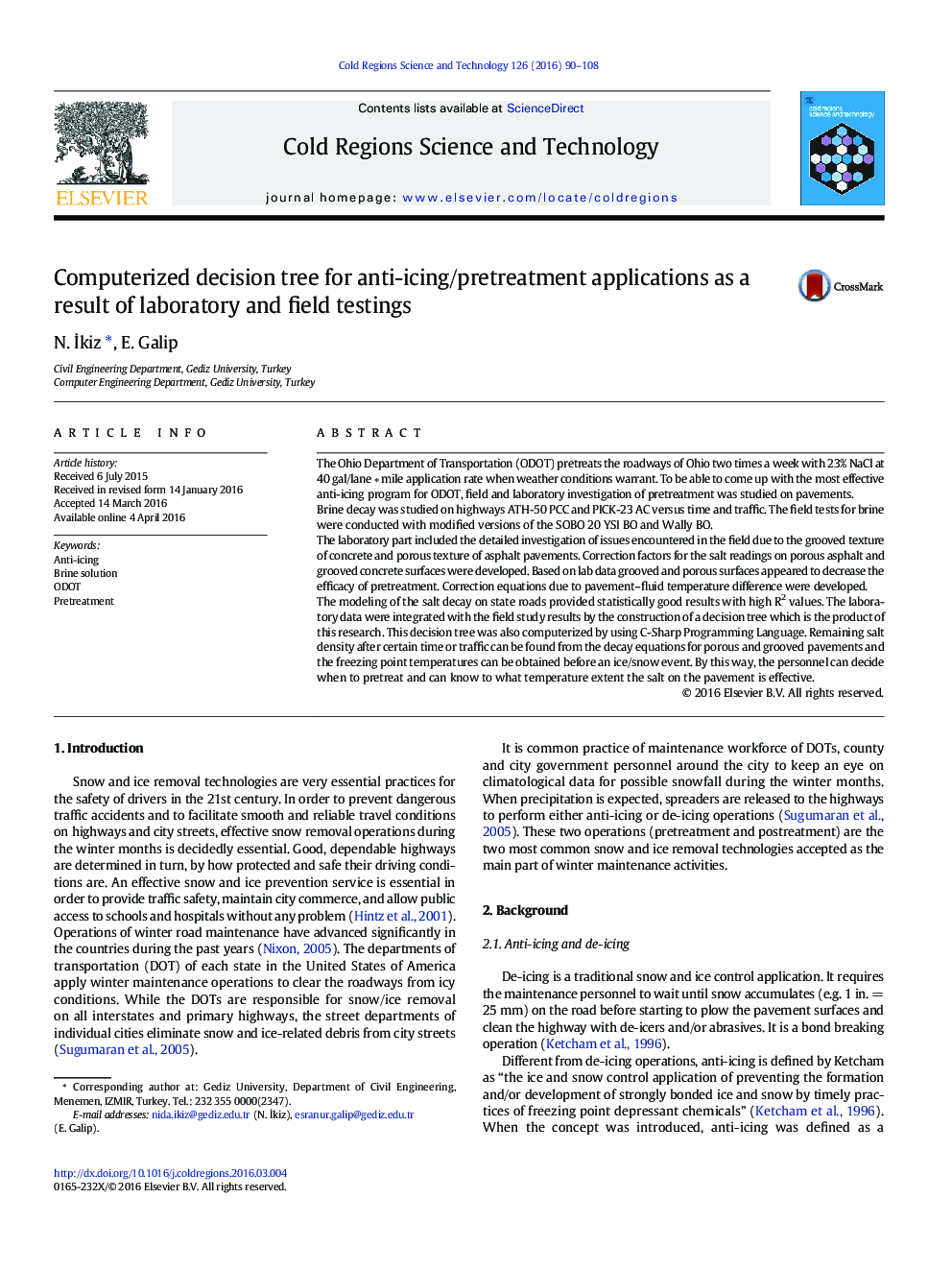| کد مقاله | کد نشریه | سال انتشار | مقاله انگلیسی | نسخه تمام متن |
|---|---|---|---|---|
| 6426591 | 1634438 | 2016 | 19 صفحه PDF | دانلود رایگان |
- The aim of the field tests was to find out the factors that were affecting the performance of pretreatment applications such as time, traffic.
- The parameters that were contributing to the decay of the sodium chloride were identified and correlated to field test results.
- The highways that were treated were PICK-23 AC and ATH 50 PCC. The salt decay equations versus time and traffic were obtained. They provide estimates on remaining sodium chloride amount on the pretreated surface type.
- Residual NaCl concentration can be found by placing in the time and traffic values into the decay equations.
- Quality control analysis of duplicate diagonal differences helped the researcher to analyze the accuracy of the salt measuring equipment. Majority of the duplicated test sections provided good analysis results.
- The aim of the laboratory tests were to find correction factors for the salt concentrations due to different pavement types and conditions experienced during the field study.
- Series of laboratory experiments were conducted to find correction factors. The results were integrated and placed inside the decision tree.
- A decision tree is drawn as a product of this research study which integrates the results of the field and laboratory tests.
- By the help of the C Sharp programming language the decision tree was computerized and application was run to show as an example for a specific case.
The Ohio Department of Transportation (ODOT) pretreats the roadways of Ohio two times a week with 23% NaCl at 40 gal/lane â mile application rate when weather conditions warrant. To be able to come up with the most effective anti-icing program for ODOT, field and laboratory investigation of pretreatment was studied on pavements.Brine decay was studied on highways ATH-50 PCC and PICK-23 AC versus time and traffic. The field tests for brine were conducted with modified versions of the SOBO 20 YSI BO and Wally BO.The laboratory part included the detailed investigation of issues encountered in the field due to the grooved texture of concrete and porous texture of asphalt pavements. Correction factors for the salt readings on porous asphalt and grooved concrete surfaces were developed. Based on lab data grooved and porous surfaces appeared to decrease the efficacy of pretreatment. Correction equations due to pavement-fluid temperature difference were developed.The modeling of the salt decay on state roads provided statistically good results with high R2 values. The laboratory data were integrated with the field study results by the construction of a decision tree which is the product of this research. This decision tree was also computerized by using C-Sharp Programming Language. Remaining salt density after certain time or traffic can be found from the decay equations for porous and grooved pavements and the freezing point temperatures can be obtained before an ice/snow event. By this way, the personnel can decide when to pretreat and can know to what temperature extent the salt on the pavement is effective.
Journal: Cold Regions Science and Technology - Volume 126, June 2016, Pages 90-108
